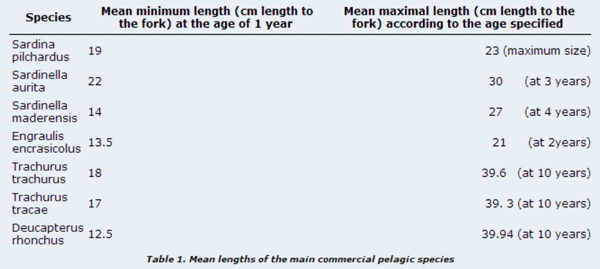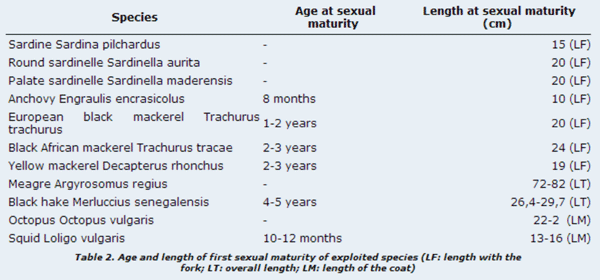Mauritanian EEZ - Data Sources
Biomass Catches of coastal and deep-sea pelagic species in particular clupeiforms, have shown large fluctuations since 1973. However, recent evaluations (2006) found that except for the round sardinella Sardinella aurita, which is considered to be over-exploited, the other small pelagic fish resources appear to be sustainably exploited. However, of the 281,000 tons pelagic fish landed in 1980, 45% were sardinella.
Demersal stocks were poorly known before trawling began in 1982, but since then data have been collected and observations recorded. Results show that the majority of demersal species off Mauritania can be classified into four groups according to hydro-climate variables and bathymetry. Recording inter-annual fluctuations in catch is important and indicates that a decline in abundance of demersal biomass has occurred from 600,000 tons to 150,000 tons between 1982 and 2006, i.e. an annual reduction in biomass of approximately 19,000 tons. This decline in several principal demersal species over the last 25 years is primarily due to over-exploitation of demersal fish stocks in the region. The deteriorating status of the octopus Octopus vulgaris remains alarming in spite of the reduction of fishing effort and reinforcement of compliance.
Mean length
Small pelagic
Mean lengths calculated for main pelagic fish adults are presented in table 1 for Mauritania.
Demersal fish
Argirosomus regius adults: mean overall length 38 cm to maximum 120 cm
Black hake Merluccius senegalensis: average overall length of 61cm.
Cephalopods
Octopus Octopus vulgaris: mean body length 11.49 cm at age 1, 23.5 cm at age 3.
Age and size of the first sexual maturity: For the main exploited species off Mauritania, age and size at sexual maturity are given in table 2.
